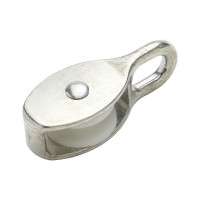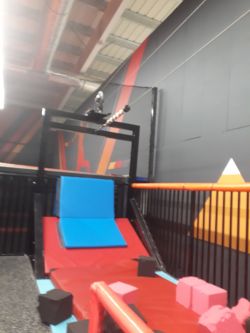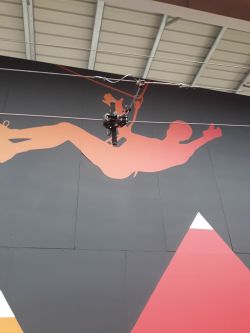The rope must be able to withstand transverse loads. It's once. Must be certified.
The surface must be smooth to facilitate the movement of the block. Such ropes can be made, for example, of wires with a trapezoidal cross-section. Or from round wires, but with a filling between the strands.
Its tearing strength MUST be greater than the maximum expected load. Some even recommend a multiplier of 5 times more.
The maximum stresses result from the design of the descent and its length and slope. A rope that works well on a 20-meter descent at a low angle may crack on a slightly longer descent. These are variable forces, but they are quantifiable.
This is where the transverse stresses that the rope must withstand must be taken into account.
However, I think that for a small zip line, at a not too high angle, a rope with a strength of between 55 and 100 kN of breaking strength is sufficient. Well, unless you will be swinging "right guys" 150 kg each. Or you are planning a descent of 200 meters with a height difference of 30 meters. This is a different story.
Therefore, do not only look at the thickness of the rope, but its exact parameters.
And if the zip-line is to be commercial, forget about the self-made. You must have a design made by a designer with appropriate permissions, certified equipment, periodically inspected and controlled, and maybe even tested for loads. Otherwise, if someone even cuts a finger, PIP and the rest of the company will hang you for jewels on the nearest lamppost, or you will do it yourself out of desperation, when they tell you everything.

Such charms of service provision.
But even if it is only a ride down from the balcony on the first floor and 20 meters - you better count your endurance. Like the force needed to anchor the rope. 100 kg of weight, on a long lever it is no longer a fairy tale and you can even smash the wall of the house. In general, zip lines are, contrary to appearances, a really extreme sport and it is very easy to get hurt. This is one of the most traumatic sports.








